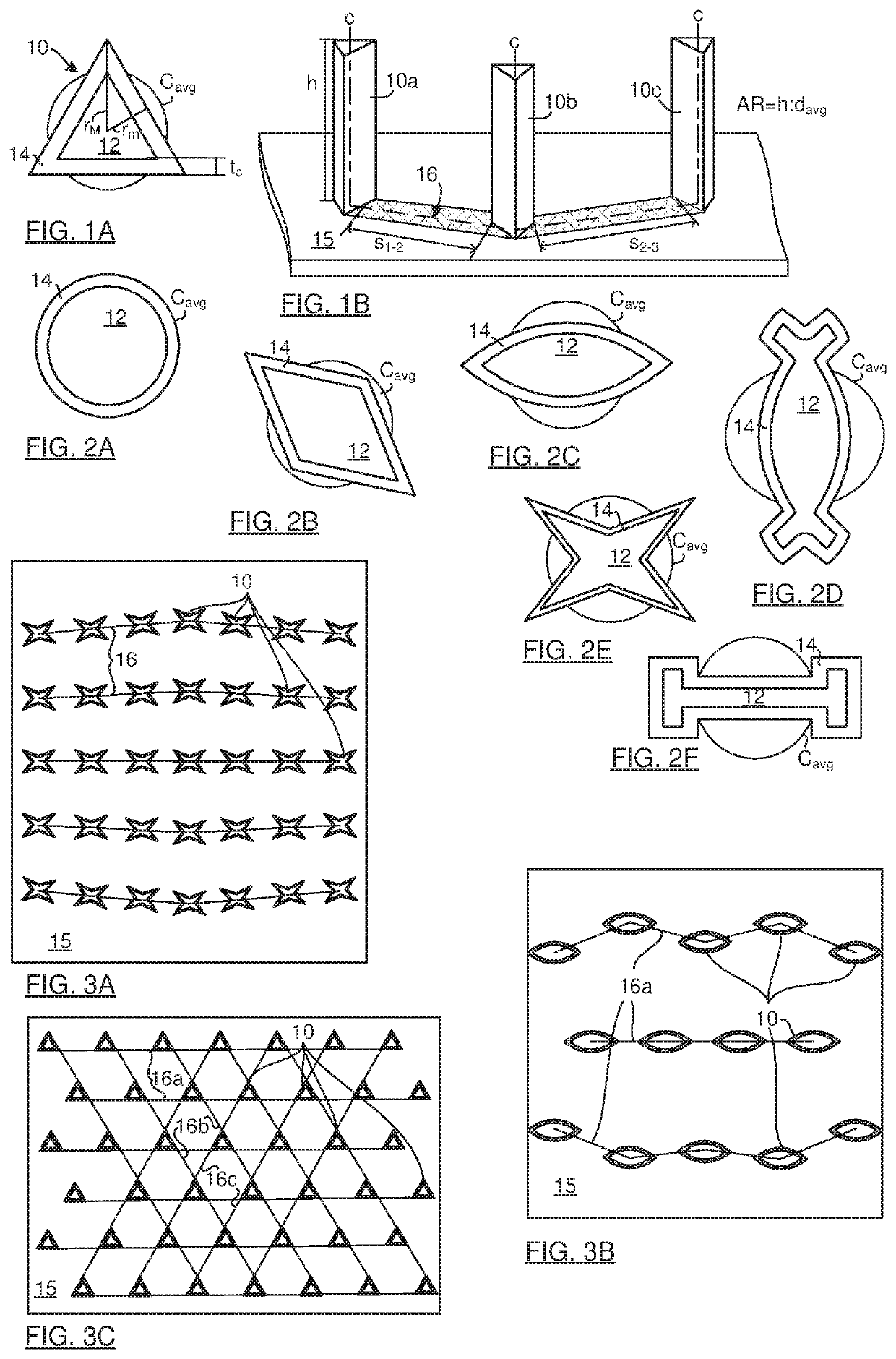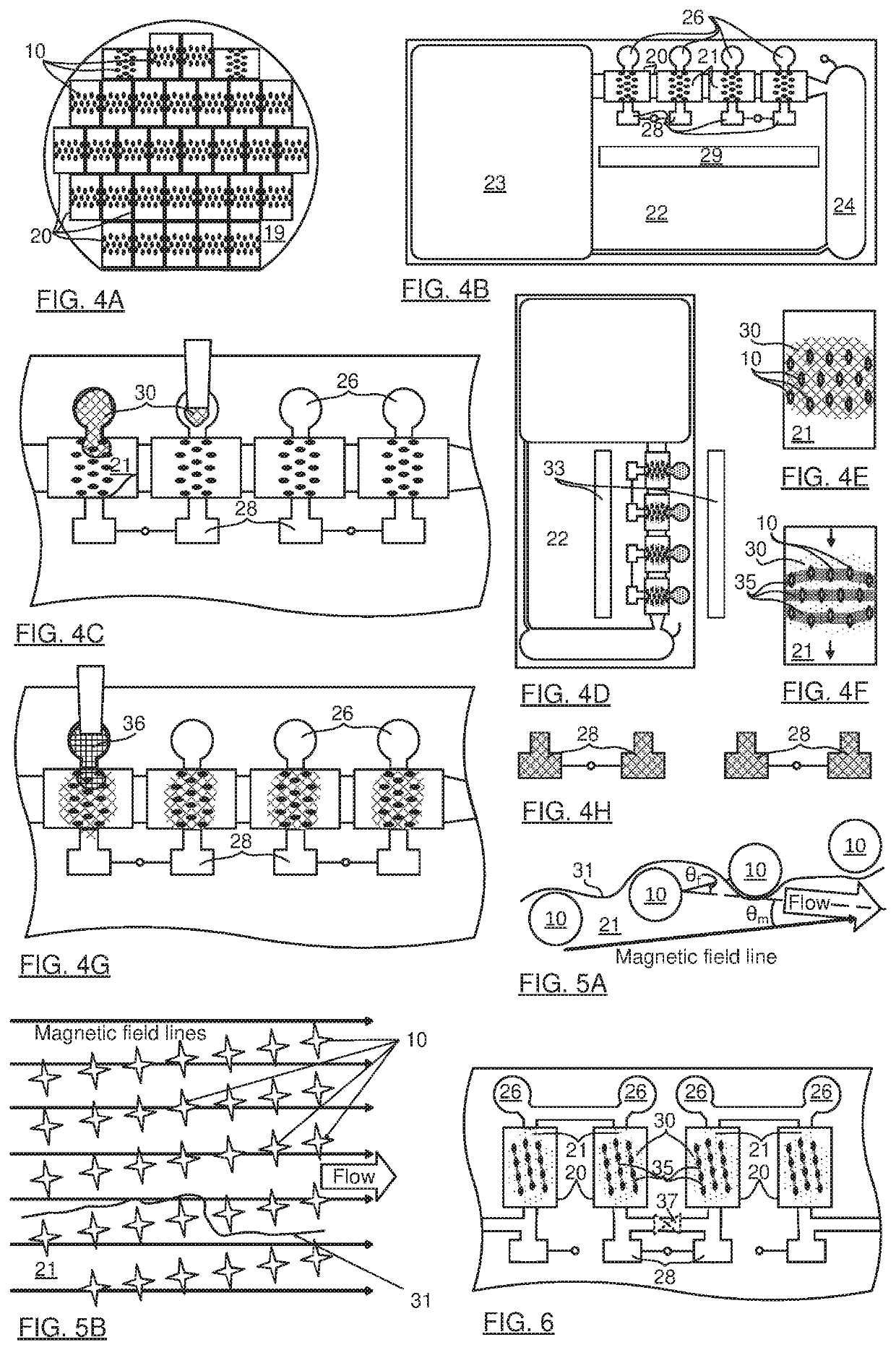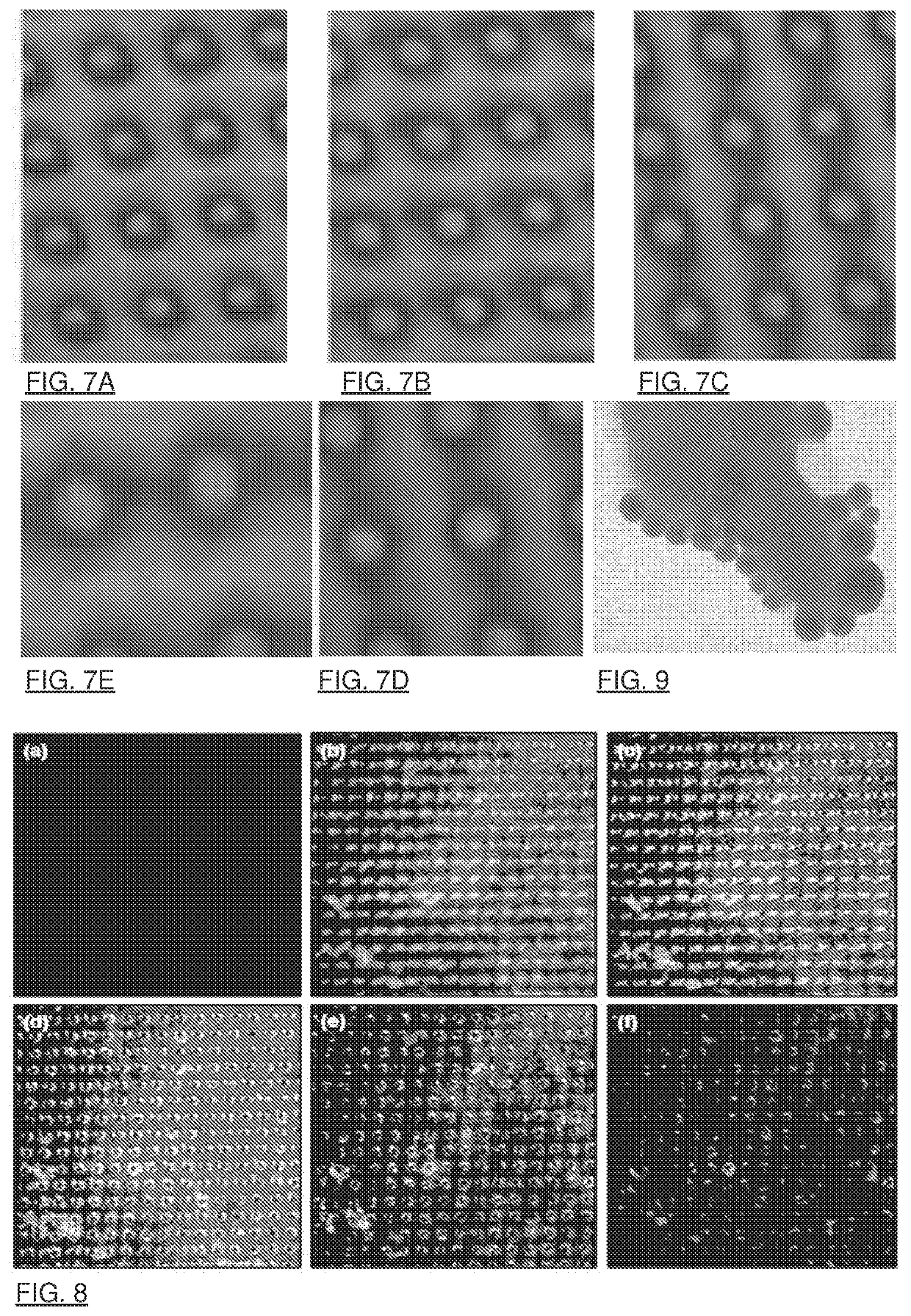Magnetic Nanoparticle Distribution in Microfluidic Chip
a microfluidic chip and magnetic nanoparticle technology, applied in nanostructure assemblies, laboratories, instruments, etc., can solve the problems of limited ability to control the distribution and movement of beads, obstruction of flow through tubes or microchannels, and non-trivial engineering to achieve them. achieve the effect of sufficient strength
- Summary
- Abstract
- Description
- Claims
- Application Information
AI Technical Summary
Benefits of technology
Problems solved by technology
Method used
Image
Examples
example
[0098]A magnetic capture device and apparatus, and it's fabrication has been described25, the entire content of which is incorporated herein by reference, including the supplementary information material. The magnetic capture device was filled with a 500 ng / ml concentration dispersion of superparamagnetic iron-oxide core silica shell nanoparticles. For present purposes, the NPs used were equivalent to NPs available from a variety of commercial suppliers. The chamber was 30 mm×17 mm. A pair of permanent magnets was initially placed at the opposite edges of the device. The magnets were 1 cm×5 cm×10 cm at a distance of 5.8 cm from each other. They generated a substantially uniform magnetic field within the capture region. We expect the graphs showing the magnetic field along different directions (for example FIG. 2 in the supplementary information material)25 to be representative of the fields produced with the present invention, except that the amplitudes are stronger with the higher ...
PUM
| Property | Measurement | Unit |
|---|---|---|
| diameter | aaaaa | aaaaa |
| diameter | aaaaa | aaaaa |
| thickness | aaaaa | aaaaa |
Abstract
Description
Claims
Application Information
 Login to View More
Login to View More - R&D
- Intellectual Property
- Life Sciences
- Materials
- Tech Scout
- Unparalleled Data Quality
- Higher Quality Content
- 60% Fewer Hallucinations
Browse by: Latest US Patents, China's latest patents, Technical Efficacy Thesaurus, Application Domain, Technology Topic, Popular Technical Reports.
© 2025 PatSnap. All rights reserved.Legal|Privacy policy|Modern Slavery Act Transparency Statement|Sitemap|About US| Contact US: help@patsnap.com



